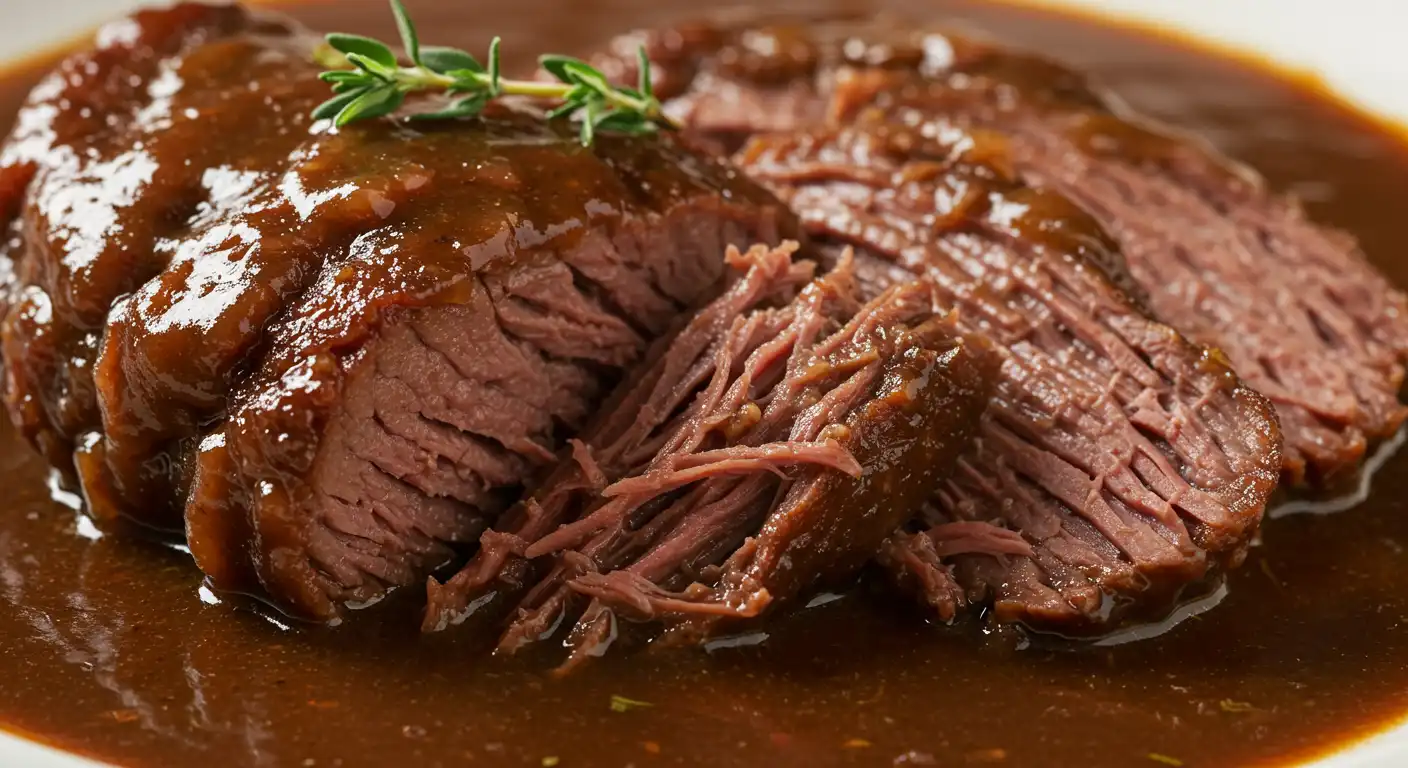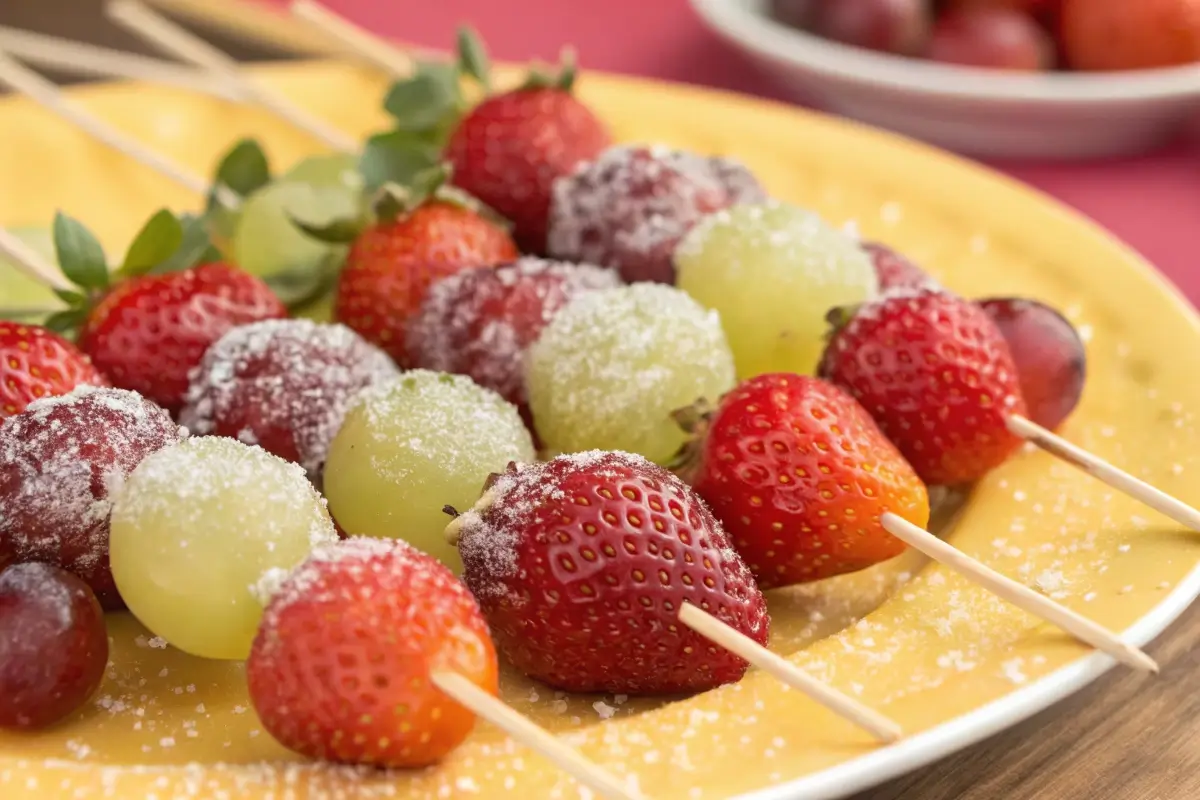beef cheeks
Beef cheeks are a hidden gem in the culinary world. They come from the facial muscles of the cow. These muscles work throughout the cow’s life, which results in dense connective tissue. However, this can transform into melt-in-your-mouth goodness with proper cooking techniques. In this article, you’ll discover everything about beef cheeks: how to prepare them, the best cooking methods, nutritional facts, and much more.
What Makes Beef Cheeks Special?
In contrast to other cuts, beef cheeks have an abundance of collagen. When slow-cooked, they become tender and succulent. At the present time, many home cooks see them as an affordable, flavorful alternative to more mainstream cuts. Furthermore, they’re versatile. For instance, you can braise them, pressure-cook them, or use them in tacos. Let’s dive deeper.
Collagen: The Secret Ingredient
Collagen plays a critical role in the texture of beef cheeks. Because the cheek muscle is well-exercised, it contains generous amounts of collagen. Eventually, this collagen breaks down into gelatin during cooking, imparting a silky mouthfeel.
Flavor Profile and Texture
To demonstrate their special appeal, think about the tenderness of a slow-cooked roast. Now multiply that silky texture by two. That’s what beef cheeks can provide. In addition, these cheeks carry a robust, meaty flavor that intensifies during the cooking process.
Buying and Storing Beef Cheeks
In the meantime, you might wonder where to buy them. At the present time, local butcher shops and online meat suppliers often carry them. Some supermarkets offer them in their fresh meat section, but you may need to request them at the counter. However, always inspect the color. You want bright red or deep purplish-red flesh, with no gray spots.
Once purchased, wrap them tightly in plastic or place them in an airtight container. Store them in the coldest part of your refrigerator for up to two days. In contrast, if you’re not cooking them right away, freeze them. They can keep for up to three months in the freezer.
Joke Break!
Here’s a quick one:
I told my beef cheeks they had to go on a strict diet…
They answered, “Sorry, we’re already cheeky enough!”
Okay, that might be silly, but you’ll never forget the “cheek” factor again!
Preparation Techniques for Beef Cheeks
1. Trimming
First, remove excess silver skin or extra fat from the surface. Beef cheeks can have a thin membrane on the outside. Hence, gentle trimming improves tenderness. A sharp boning knife works well.
2. Marinating
Marinating infuses flavor. Because beef cheeks are dense, allow plenty of time for marination—ideally overnight. For example, use a mixture of herbs, spices, and a flavorful broth as your marinade base. Avoid alcoholic beverages, like wine or beer, in this marinade to keep the recipe alcohol-free.
3. Seasoning
Season both sides generously with salt, pepper, and other herbs you love. In addition, consider aromatics like garlic, onions, and celery to add depth to the dish.
Cooking Methods
1. Braising
Braising beef cheeks stands as one of the most popular methods. You sear them first, locking in juices, then cook them low and slow. For instance, you can braise them with beef stock, onions, tomatoes, carrots, and root vegetables. In contrast to quicker methods, this yields a fall-apart texture.
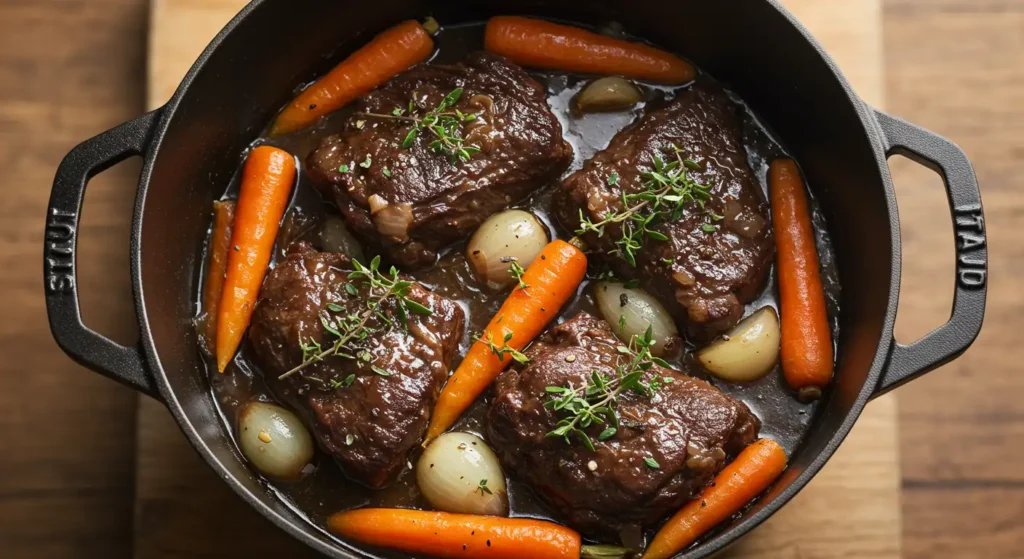
- Steps to Braise:
- Heat a heavy pot or Dutch oven.
- Sear each cheek in a small amount of oil until browned on all sides.
- Remove cheeks and sauté onion, garlic, and other veggies.
- Deglaze with stock (or a flavorful broth).
- Return cheeks to the pot. Then, cover and simmer for several hours, until fork-tender.
2. Slow Cooking
If you have a slow cooker, you can create a hands-off meal. Because slow cookers maintain a steady low temperature, the cheeks turn silky and moist after about 6 to 8 hours. Simply place them in the cooker with your preferred vegetables and seasonings.
3. Pressure Cooking
Short on time? Therefore, a pressure cooker or Instant Pot helps you achieve tender beef cheeks within 60 to 90 minutes. Sear them first for extra color, then add your preferred broth or sauce. Seal the lid and let the pressure do the magic.
4. Grilling or Smoking
While less common, you can grill or smoke them for a unique flavor. However, try to tenderize them first through marination or a quick braise. Then finish them on the grill or smoker to add a smoky crust.
Serving Suggestions for Beef Cheeks
- Tacos: Shred the cooked cheeks, and top with fresh onions, cilantro, and a squeeze of lime.
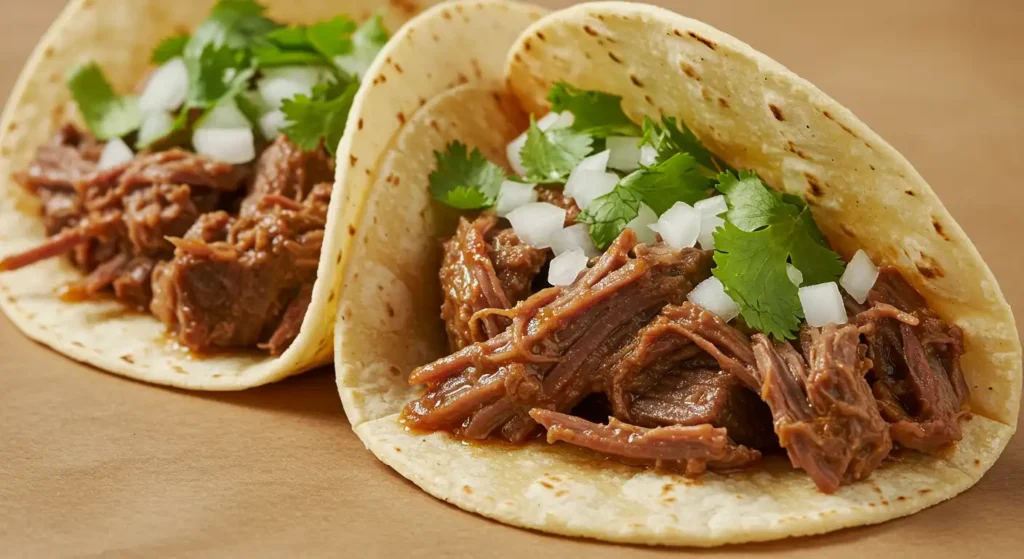
- Stews: Include chunks of vegetables, beans, or lentils for a hearty meal.
- Sandwiches: Pile shredded beef cheeks onto a crusty roll with tangy coleslaw.
- Ramen: Slice and place atop noodles in a rich broth for a fusion twist.
- Over Rice: Spoon braised cheeks and sauce over steamed rice for an easy dinner.
In conclusion, these serving ideas show the versatility of beef🥩 cheeks. They can adapt to many cuisines.
Nutritional Data
Below is a handy table showcasing the approximate nutritional values per 3 oz (85g) serving of beef🥩 cheeks:
| Nutrient | Per 3 oz (85g) Serving |
|---|---|
| Calories | ~150 |
| Protein (g) | 20 |
| Fat (g) | 6 |
| Carbohydrates (g) | 0 |
| Cholesterol (mg) | 60 |
| Iron (mg) | 1.6 |
| Calcium (mg) | 10 |
| Sodium (mg) | 45 |
Because exact nutritional values vary by preparation, use this as a guide. Beef 🥩cheeks are protein-rich and moderate in fat. They also offer minerals like iron and calcium.
Health Benefits of Beef Cheeks
- High-Quality Protein: They contain all the essential amino acids.
- Rich in Collagen: Good for joint, skin, and hair health.
- Minerals and Vitamins: Iron supports healthy red blood cells. Zinc and B vitamins also bolster immunity.
However, portion control is vital if you are watching your saturated fat intake.
International Dishes Featuring Beef Cheeks
Explore how beef cheeks shine in global cuisine!
- Italian Osso Buco Alternative: Replace veal shanks with beef cheeks for a twist on this classic dish. Serve over creamy risotto for an authentic Italian experience.
- Mexican Barbacoa: In Mexican cuisine, slow-cooked beef cheeks seasoned with smoky chipotle and earthy spices make a fantastic filling for tacos or burritos.
- French Daube Provençale: Marinate beef cheeks in red wine, garlic, and herbs, then slow-cook with tomatoes and olives for a hearty French stew.
- Asian-Style Braised Beef: Simmer beef cheeks in soy sauce, ginger, garlic, and star anise, then serve with rice or noodles for a rich, aromatic meal.
These international preparations show how adaptable beef🥩 cheeks are across various culinary traditions.
Pairing Beef Cheeks with Sides and Beverages
Complement your beef cheeks with these perfect pairings:
Sides
- Mashed Potatoes: Creamy mashed potatoes balance the richness of braised beef🥩 cheeks.
- Polenta: Soft polenta provides a comforting base to soak up the flavorful juices.
- Roasted Vegetables: Caramelized carrots, parsnips, or Brussels sprouts add natural sweetness and texture.
Beverages
- Red Wine: A full-bodied wine, like Cabernet Sauvignon or Syrah, enhances the depth of beef🥩 cheeks.
- Dark Ale or Stout: These beers complement the savory, robust flavors of slow-cooked meat.
- Herbal Teas: A warm, non-alcoholic option like chamomile or mint tea works well for a light pairing.
Pairings elevate the dining experience, showcasing the versatility of beef🥩 cheeks.
Creative Leftovers Ideas for Beef Cheeks
Don’t let any leftovers go to waste! Transform them into these creative dishes:
- Cheeky Pot Pies: Shred the meat and combine it with leftover braising liquid, then bake it under a puff pastry crust.
- Stuffed Bell Peppers: Mix shredded beef cheeks with cooked rice, herbs, and cheese, then stuff into bell peppers and bake.
- Beef Cheek Hash: Combine chopped beef cheeks with potatoes, onions, and spices for a hearty breakfast or brunch.
- Beef Cheek Pizza: Use the shredded meat as a topping along with caramelized onions, arugula, and a drizzle of balsamic glaze.
These leftover ideas ensure that every bite of beef cheeks is enjoyed to its fullest potential.
Tips for Perfectly Cooked Beef Cheeks
- Low and Slow: Give them time. Because of the high connective tissue, a longer cooking period ensures tenderness.
- Temperature Control: Aim for a simmer around 190–210°F (88–99°C) for braising.
- Seasoning: Salt and spices penetrate better if allowed to sit on the meat before cooking.
- Resting: Let the cheeks rest for 10 minutes after cooking. In contrast, diving in too soon can cause the juices to spill out.
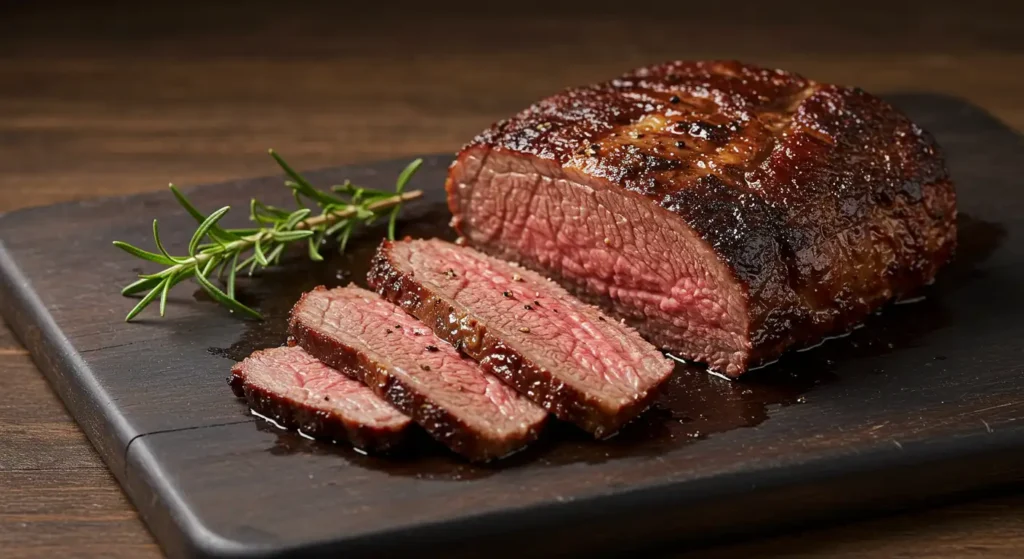
Frequently Asked Questions About Beef Cheeks
Are beef cheeks good meat?
Yes. Beef🥩 cheeks are a delicious, collagen-rich cut. When cooked properly, they become incredibly tender and flavorful…
Why is beef cheek so expensive?
In some areas, beef🥩 cheeks cost more because they aren’t as widely available. Also, each cow yields a limited amount of cheek meat, which drives up demand…
Are beef cheeks a cheap cut?
Traditionally, they’ve been considered an affordable cut. However, in recent years, their growing popularity has sometimes increased their price. In contrast to prime steaks, they still can be a cost-effective choice…
Is beef cheek slimy?
Well-cooked beef🥩 cheeks shouldn’t feel slimy. They do get moist and gelatinous due to collagen breakdown. But if prepared correctly, they’re velvety and fork-tender, not slimy…
More FAQs
- Can I prepare beef cheeks without a slow cooker?
Absolutely. You can braise them in an oven or on a stovetop. Just maintain a low temperature. - Do I need to remove all the fat before cooking?
Remove excessive fat or silver skin. However, a bit of fat helps keep the meat moist. - Can I freeze cooked beef cheeks?
Yes. Cool them, then store in an airtight container for up to three months. - How can I reduce the cooking time?
Use a pressure cooker or Instant Pot. This shortens braising time to about 60–90 minutes. - What flavors pair best with beef cheeks?
Earthy spices like paprika, cumin, garlic, onion, and herbs like thyme or rosemary work well.
The Culinary Possibilities with Beef Cheeks
Now that you know how to buy, store, cook, and serve beef🥩 cheeks, it’s time to get adventurous. You can transform them into hearty stews, comforting tacos, or even an elegant entrée. Furthermore, if you want to elevate your next family dinner, consider braising them in a robust broth with carrots and onions. The result will be an impressive dish that melts in your mouth.
Conclusion on beef cheeks
Beef🥩 cheeks aren’t just a novelty cut. They’re an opportunity to explore rich flavors and textures without breaking the bank. In conclusion, if you’re looking to elevate your home-cooked meals, give beef🥩 cheeks a try. Slow-cooked or pressure-cooked, they promise a succulent and satisfying experience. Eventually, you might find them becoming a staple in your kitchen rotation.
